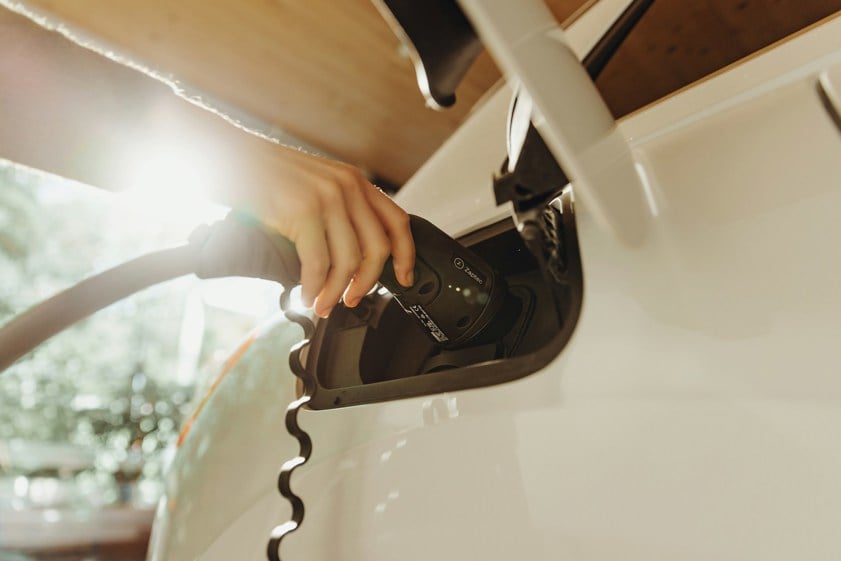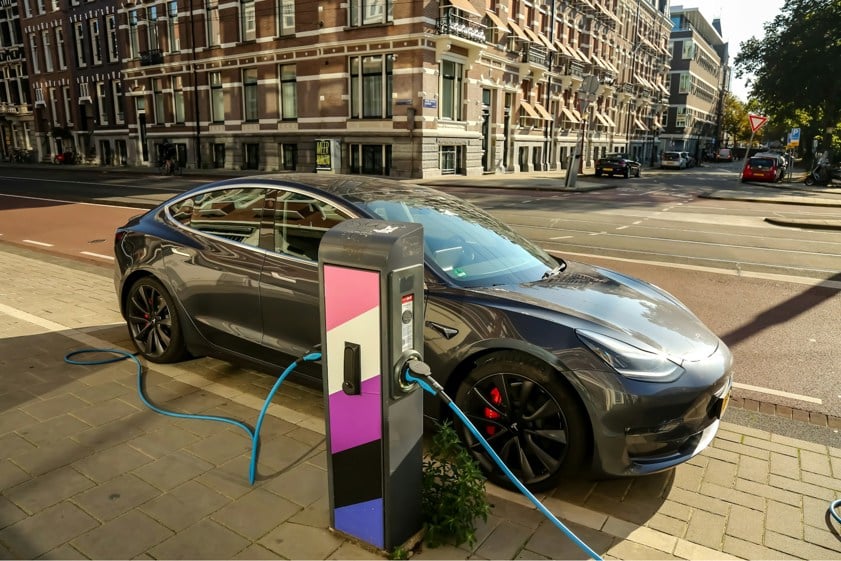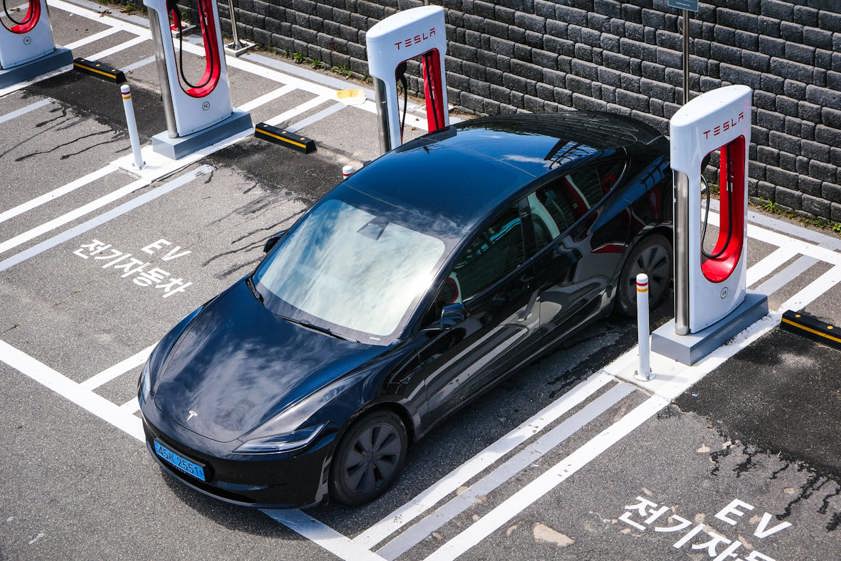
If there’s one thing that discourages people from switching to an electric car, it’s the fact that they don’t have access to home charging.
If you live in a terrace house, a flat, or simply don’t have a driveway, the conundrum of home charging can be tricky. It’s a fair concern; after all, almost all EV drivers talk about the joy of home charging like it’s the best thing since sliced bread.
There’s no denying that home charging is a great tool, but 5.7 million households (23.2%) in the UK live in a terrace house, therefore, home charging simply is not an option for a lot of us (Office for National Statistics).
But here’s the good news: you can definitely own or lease an electric car without a home charger. Yes, there might be a few added complications to consider, but it’s certainly possible. Whether you’re navigating city life or just don’t fancy a home charger, there are ways to make it work.
In this blog, we’ll bust the myth regarding the necessity of home EV charging, share smart charging strategies, and show you how to make the most of the public charging network. We discuss:
We don’t want to be seen as pessimistic, but before diving head first into getting an EV without a home charger, it’s worth taking a step back and honestly assessing your personal circumstances.
Not everyone’s routine or expectations are the same, and if you’re switching to an electric car, it should be more practical and not a daily headache causing more stress. You should consider the following:
- Your tolerance for inconvenience - Let’s be real, charging an EV without a home charger won’t be as convenient. You’ll need to top up on the go and always be aware of charging points nearby. If you’re someone who doesn’t like surprises and detours, it might take some getting used to.
- Availability of charging points nearby - Do detailed research on what your local areas offer. Are there public charging bays in your postcode? What about rapid chargers? Apps like ZapMap are great in these situations. If you can’t have a home charger, the more chargers in your area, the better.
- Electric range is an estimate - The stated range of an electric vehicle is a manufacturer estimate, and real-world factors like cold weather and traffic can reduce it. If you can’t charge at home, you’ll need to build a buffer and choose a car with a higher range than your weekly mileage. Trust us, you don’t want to be suffering from range anxiety, it’s no fun.

If you’ve considered the above and still see it feasible to drive an EV without a home charger, you’ll be happy to know that public charging is easier than you think.
Public charging infrastructure in the UK has expanded rapidly, with over 76,840 charging points, 38,000 charging locations, and 111,000 connectors as of March 2025 (ZapMap).
Chargers are now in all sorts of places you already go, such as supermarkets, shopping centres, gyms, hotels, and even pub car parks. You just need to adapt your mindset to EV driving. Once you start treating charging like topping up rather than filling to 100%, it can easily become part of your everyday routine.
To help with this mindset change, there are plenty of charging options available, such as rapid and ultra-rapid chargers, which can fill up your battery from 10%-80% in around 30 minutes (variables apply).
There are also on-street residential chargers that are often built into lamp posts, which are a game-changer for people living in flats or terraced houses.
“With a bit of planning and the right apps, public charging quickly becomes second nature. With thousands of public chargers across the UK, it’s more accessible than ever.”

There’s no denying that charging at home during off-peak hours is the cheapest way to run an EV, but this doesn’t mean that public charging is a financial burden. In fact, for many drivers, it’s still cheaper than filling up on petrol and diesel.
According to ZapMap, the weighted average to charge an EV on the public network in March 2025 was 53p/kWh on slow/fast chargers and 80p/kWh for rapid/ultra-rapid chargers. This is more than the average of 32p/kWh for home charging, but it is still cheaper for many than filling up on petrol and diesel.
If you’re looking to keep prices as low as possible, here’s what you need to know:
- Destination chargers, such as at supermarkets and gyms, are often low-cost or free. Keep in mind that the cost and availability of these chargers are subject to change, but it’s definitely worth investigating.
- Network subscriptions can save you money. You’ll usually get discounted charging rates through a monthly plan.
- Off-peak times are usually the most cost-efficient as some providers will lower their rates.
It’s also worth considering the wider savings that you’ll make, such as:
- Exemption from ULEZ and Congestion Charges
- Lower servicing and maintenance
Charging without a home charger doesn’t have to be an expensive hassle. Yes, there might be some things that put you off, but with the right approach and a bit of preparation, it can be pretty straightforward.
- Choose the right EV - We touched on this before, but without a home charger, you’ll need a car with a longer real-world range and rapid charging capability. Look for models with a range in excess of 320 miles and can charge up to at least 100kW DC.
- Use charging apps - Thanks to the rapid development of EVs, there’s plenty of infrastructure to help you out. Apps such as ZapMap, Bonnet, and Chargepoint (just to name a few) are game changers and can show live availability, pricing, and charger type. This is perfect when planning a route with charging stops, or just looking for a nearby charger.
- Make charging part of your routine - Don’t think of charging as a chore, think of it more like a necessity. Charge whenever you can, whether that’s at the gym or doing some shopping. Once you get into the habit of plugging in during everyday activities, it becomes the norm.
- Register with multiple networks - Like petrol and diesel, there are plenty of retailers you can choose from to charge your EV, and most of them require an account to get the best rates. Look at the options in your local area and join at least a couple of them, giving you flexibility and choice when it comes to charging.

If you can’t charge at home, your workplace is probably the next best option. More businesses in the UK are installing EV charging points as part of their commitment to sustainability, and if your employer offers it, charging at work can be just as convenient as overnight charging.
Think about it: it’s a similar time frame where you aren’t using your car. It’s perfect for charging.
Depending on how often (and far) you drive, you might only need to charge at work a couple of days a week. Simply just get to work and plug in. After a hard day's graft, you’ll have the pleasure of being able to drive home on a full battery!
For those considering a business lease, workplace charging makes the switch to electric even easier. Whether you’re running a small business or a fleet of vehicles, a business EV lease can have many benefits, such as:
- Lower BiK tax
- VAT reclaim
- Fixed monthly payments
- Eco-friendly brand image
You don’t have to have a home charger to enjoy the benefits of electric driving. With thoughtful planning, utilising public and workplace charging, and selecting the right EV, it’s possible to make the switch.
If you’re after an electric lease car, check out our latest electric leasing deals or our comprehensive electric leasing guides. As one of the UK’s largest electric leasing brokers, we’ll be sure to find a deal you love.
Originally posted: 25th April 2025

